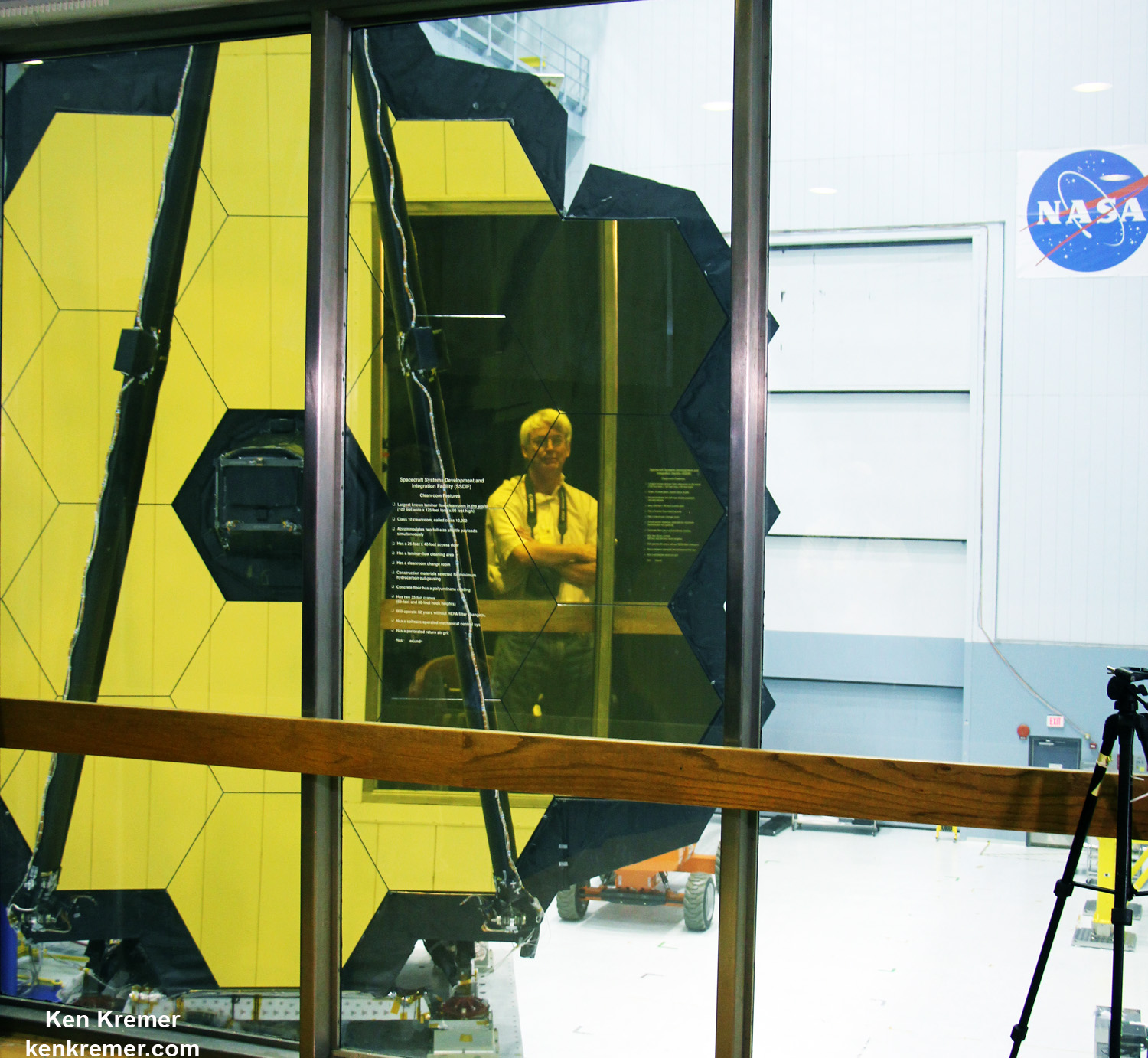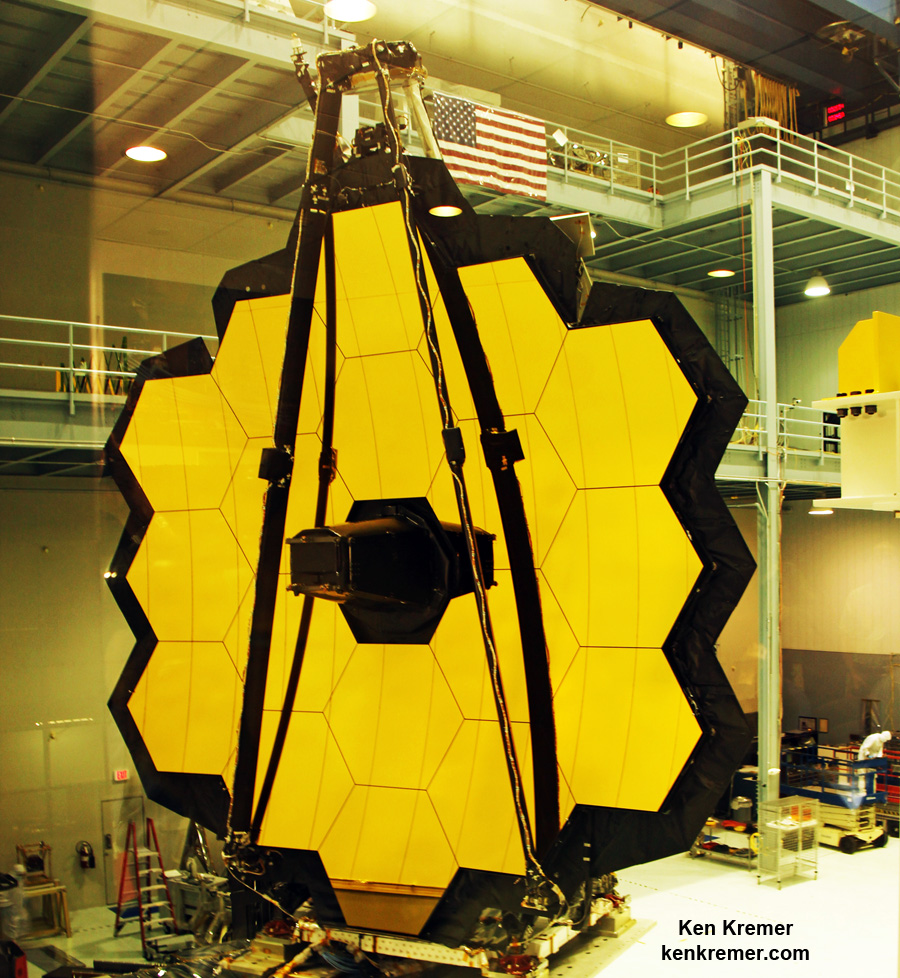
NASA GODDARD SPACE FLIGHT CENTER, MD – The James Webb Space Telescope (JWST) is now deemed “sound” and apparently unscathed, engineers have concluded, based on results from a new batch of intensive inspections of the observatory’s structure, after concerns were raised in early December when technicians initially detected “anomalous readings” during a preplanned series of vibration tests, NASA announced Dec. 23.
After conducting both “visual and ultrasonic examinations” at NASA’s Goddard Space Flight Center in Maryland, engineers have found it to be safe at this point with “no visible signs of damage.”
But because so much is on the line with NASA’s $8.8 Billion groundbreaking Webb telescope mission that will peer back to nearly the dawn of time, engineers are still investigating the “root cause” of the “vibration anomaly” first detected amidst shake testing on Dec. 3.
“The team is making good progress at identifying the root cause of the vibration anomaly,” NASA explained in a Dec 23 statement – much to everyone’s relief!
“They have successfully conducted two low level vibrations of the telescope.”
“All visual and ultrasonic examinations of the structure continue to show it to be sound.”

Starting late November, technicians began a defined series of environmental tests including vibration and acoustics tests to make sure that the telescopes huge optical structure was fit for blastoff and could safely withstand the powerful shaking encountered during a rocket launch and the especially harsh rigors of the space environment. It would be useless otherwise – unable to carry out unparallelled science.
To carry out the vibration and acoustics tests conducted on equipment located in a shirtsleeve environment, the telescope structure was first carefully placed inside a ‘clean tent’ structure to protect it from dirt and grime and maintain the pristine clean room conditions available inside Goddard’s massive clean room – where it has been undergoing assembly for the past year.
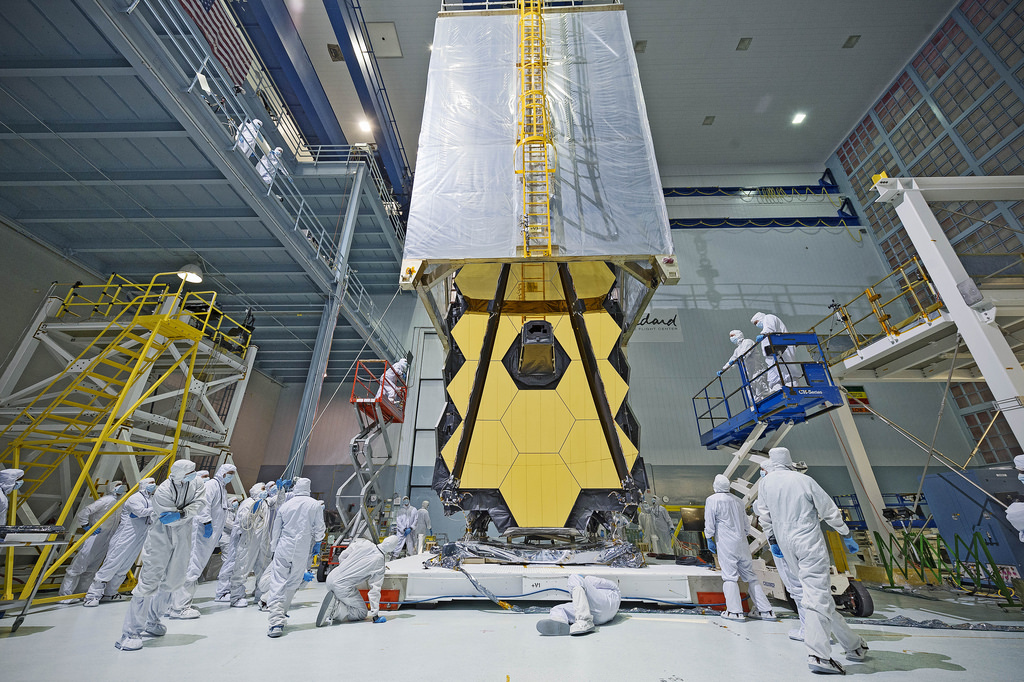
NASA’s James Webb Space Telescope is the most powerful space telescope ever built and is the scientific successor to the phenomenally successful Hubble Space Telescope (HST).
The mammoth 6.5 meter diameter primary mirror has enough light gathering capability to scan back over 13.5 billion years and see the formation of the first stars and galaxies in the early universe.
The Webb telescope will launch on an ESA Ariane V booster from the Guiana Space Center in Kourou, French Guiana in 2018.
“The James Webb Space Telescope is undergoing testing to make sure the spacecraft withstands the harsh conditions of launch, and to find and remedy all possible concerns before it is launched from French Guiana in 2018.”
However, shortly after the vibration testing began technicians soon discovered unexpected “anomalous readings” during a shake test of the telescope on Dec. 3, as the agency initially announced in a status update on the JWST website.
The anomalous readings were found during one of the vibration tests in progress on the shaker table, via accelerometers attached to the observatories optical structure known as OTIS.
“During the vibration testing on December 3, at Goddard Space Flight Center in Greenbelt, Maryland, accelerometers attached to the telescope detected anomalous readings during a particular test,” the team elaborated.
So the team quickly conducted further “low level vibration” tests and inspections to more fully understand the nature of the anomaly, as well as scrutinize the accelerometer data for clues.
“Further tests to identify the source of the anomaly are underway. The engineering team investigating the vibe anomaly has made numerous detailed visual inspections of the Webb telescope and has found no visible signs of damage.”
“They are continuing their analysis of accelerometer data to better determine the source of the anomaly.”
The team is measuring and recording the responses of the structure to the fresh low level vibration tests and will compare these new data to results obtained prior to detection of the anomaly.
Work continues over the holidays to ensure Webb is safe and sound and can meet its 2018 launch target. After thoroughly reviewing all the data the team hope to restart the planned vibration and acoustic testing in the new year.
“Currently, the team is continuing their analyses with the goal of having a review of their findings, conclusions and plans for resuming vibration testing in January.”
Webb’s massive optical structure being tested is known as OTIS or Optical Telescope element and Integrated Science. It includes the fully assembled 18-segment gold coated primary mirror and the science instrument module housing the four science instruments
OTIS is a combination of the OTE (Optical Telescope Assembly) and the ISIM (Integrated Science Instrument Module) together.
“OTIS is essentially the entire optical train of the observatory!” said John Durning, Webb Telescope Deputy Project Manager, in an earlier exclusive interview with Universe Today at NASA’s Goddard Space Flight Center.
“It’s the critical photon path for the system.”
The components were fully integrated this past summer at Goddard.
The combined OTIS entity of mirrors, science module and backplane truss weighs 8786 lbs (3940 kg) and measures 28’3” (8.6m) x 8”5” (2.6 m) x 7”10“ (2.4 m).
The environmental testing is being done at Goddard before shipping the huge structure to NASA’s Johnson Space Center in February 2017 for further ultra low temperature testing in the cryovac thermal vacuum chamber.
The 6.5 meter diameter ‘golden’ primary mirror is comprised of 18 hexagonal segments – looking honeycomb-like in appearance.
And it’s just mesmerizing to gaze at – as I had the opportunity to do on a few occasions at Goddard this past year – standing vertically in November and seated horizontally in May.
Each of the 18 hexagonal-shaped primary mirror segments measures just over 4.2 feet (1.3 meters) across and weighs approximately 88 pounds (40 kilograms). They are made of beryllium, gold coated and about the size of a coffee table.
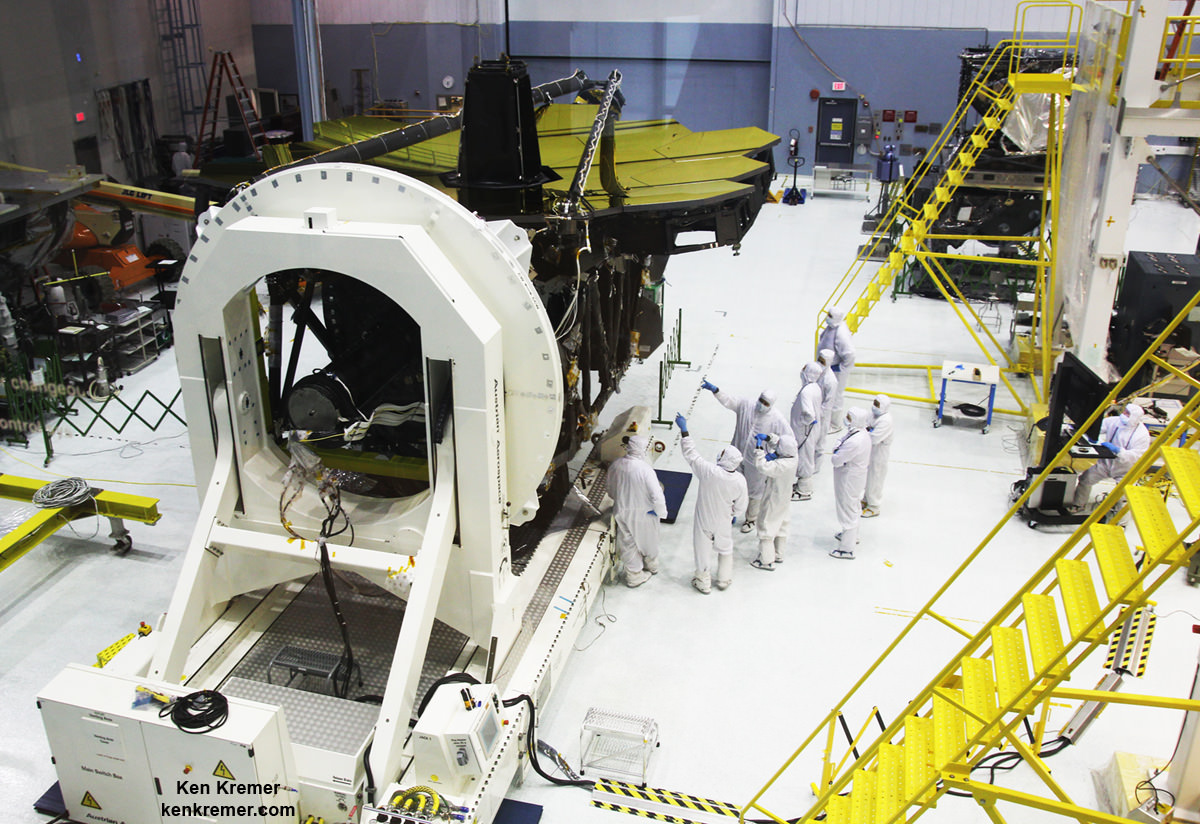
The Webb Telescope is a joint international collaborative project between NASA, the European Space Agency (ESA) and the Canadian Space Agency (CSA).
Webb is designed to look at the first light of the Universe and will be able to peer back in time to when the first stars and first galaxies were forming.
It will also study the history of our universe and the formation of our solar system as well as other solar systems and exoplanets, some of which may be capable of supporting life on planets similar to Earth.
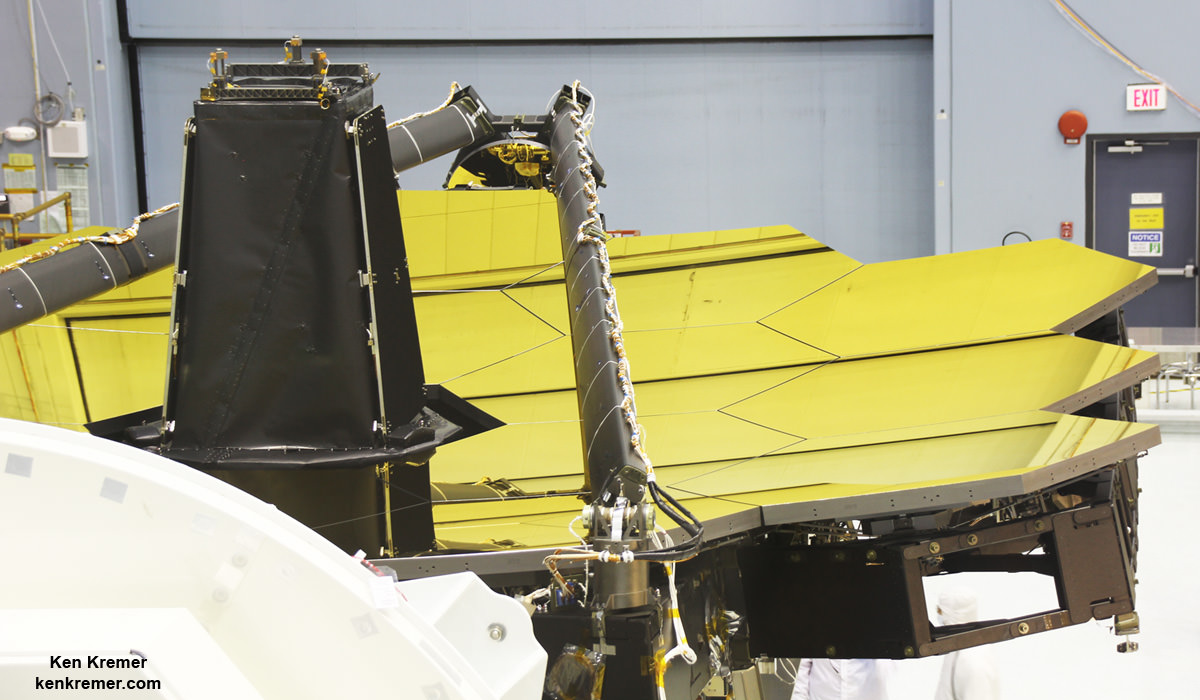
Watch this space for my ongoing reports on JWST mirrors, science, construction and testing.
Stay tuned here for Ken’s continuing Earth and Planetary science and human spaceflight news.
